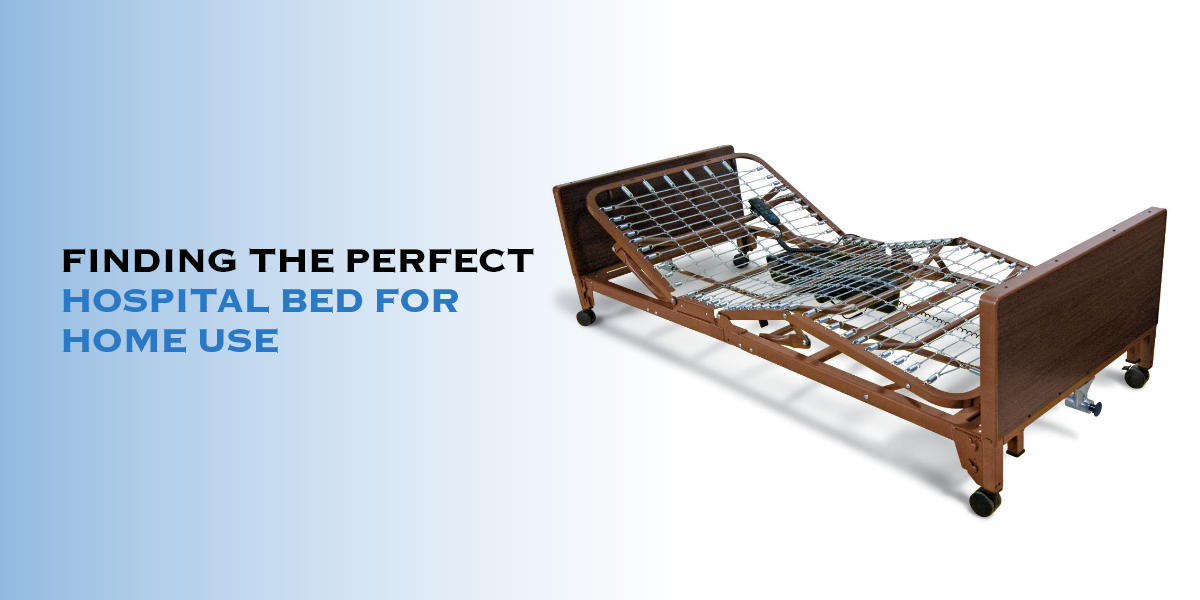In today’s world of advanced technology, improved medical treatments and readily available home medical equipment, selecting the perfect hospital bed has become quite a task. Whether you’re replacing a bed in a hospital or looking for one for your home from any medical supplies store, the options seem endless.
Choosing the right hospital bed from a good medical supplies store like leader medical supplies is crucial, not just for patients but also for caretakers and hospital staff.
These beds come with various features, from manual cranks to electric controls, making patient care more manageable. Investing in a quality bed from the Leader medical supplies store is more than just ensuring a good night’s sleep; it’s a key factor, especially when dealing with illnesses or recovery.
This blog will guide you through the process of finding the ideal hospital bed for home use from a medical supplies store, covering types of beds, ICU beds, mattress options, and essential features that contribute to comfort, safety, and proper medical care for the patient. Let’s dive into the world of hospital beds to make an informed decision for the well-being of your loved ones.
Key Factors in Choosing a Hospital bed for Home Use
Hospital beds come with special features meant for medical needs, and these features go beyond what regular bed frames and mattresses offer. They provide added well-being and comfort that can be crucial, especially during recovery or health conditions. So, how do you go about choosing the right hospital bed for your home?
Before making the decision to buy or rent a this crucial home medical equipment for personal use, it’s essential to carefully consider a variety of factors:
- Short-Term vs Long-Term Considerations: Patients should assess whether they require the hospital bed for a short-term recovery period or a more extended, ongoing need. For those spending a significant amount of time in bed, especially more than 15 hours a day, a full-electric home hospital bed is the best choice, offering long-term comfort and durability. Conversely, semi-electric and manual beds are more suitable for short-term usage.
- Mobility of the Patient: The level of patient mobility plays a crucial role in determining the type of home hospital bed required. For individuals with balance issues or those who cannot reposition themselves without assistance, a highly adjustable bed is ideal. In contrast, a manually adjusted bed may be more cost-effective for patients without mobility challenges.
- Strength of the Caregiver: It’s important to consider the strength and stamina of the caregiver. An electric bed, with its self-positioning features, can significantly ease the strain on caregivers during daily care routines.
- Size and Weight of the Patient: The size and weight of the patient are critical factors when selecting a hospital bed. Different bed shapes cater to various age groups and body types. For instance, a bariatric bed, with its wider design, is more comfortable for heavier users, while young patients and infants benefit from the safety and comfort of a child-sized bed.
- Adjustability Features: Hospital beds with push-button controls provide the flexibility to modify the bed frame, head, and foot according to the user’s convenience. Semi-electric beds, for example, allow the adjustment of the head and feet by pressing buttons on the control panel.
- Options for Side Rails and Grab Bars: Consider whether the hospital bed includes side rails, as they prevent patients from falling out, provide support during repositioning, and assist with patient transfers. The presence of side rails contributes to the overall safety and functionality of the bed.
- Space in the room: Consider the available space in the room when selecting a hospital bed. While the average care bed dimensions of 36″ wide x 80″ long make them versatile for most rooms, it’s crucial to choose a placement that allows the patient to move in and out smoothly without feeling crowded. Opt for a room with enough space to position the hospital bed comfortably. The placement of the hospital bed should prioritize easy accessibility, ensuring that you or a caregiver can hear your loved one if they require assistance. Many people choose to situate the bed on the main floor to avoid the challenges of climbing stairs.
By carefully evaluating these factors, individuals can make informed decisions to ensure that the chosen hospital bed meets the specific needs of both the patient and their caregivers.
However, there are a lot of options for hospital beds available but what type of bed a patient needs depends on their requirements. Choosing the right type of hospital bed depends on your preferences, budget, time span and specific requirements.
When considering hospital beds for home use, it’s crucial to consult with a doctor to determine the specific requirements and receive recommendations tailored to the patient’s unique needs.
Each type serves a unique purpose, catering to different needs and ensuring that patients receive the comfort and care they deserve. Let’s take a look at the variants.
Types of Hospital Beds for Home Use
Different kinds of hospital beds are available, similar to regular beds, offering various options to meet specific needs. The choice depends on your situation and what would provide the best support for rest and comfort.
Various medical supplies stores such as leader medical supplies offer a range of bed options, from fully manual to entirely electric, allowing you to have as much or as little control over bed adjustments as you prefer.
Fully Electric Hospital Bed:
- The most advanced type, fully electric, provides the patient with control over their position for optimal comfort.
- Comes with a remote control for easy adjustment of head and feet positions as well as height level. Caregivers can easily make adjustments electronically using a remote or side buttons.
- Offers convenience with a single click for multiple adjustments.
Semi-Electric Hospital Bed:
- Offers a combination of electric and manual control.
- Provides the convenience of electric control for specific tasks while allowing manual operation as a backup.
- Connected to a motor requiring an electric connection for operation.
- Can transform into a manual bed without electricity.
- Allows the patient to adjust the position of their head and feet using a remote, but the height must be changed manually by a caregiver.
Manual Hospital Bed:
- Requires manual adjustment as it is controlled manually without any electric connections or technology.
- Changes in the bed’s level or height are done by a caregiver using a hand-operated crank. The physical effort demanded for adjustments is suitable for those with the necessary strength. However, it is budget friendly.
Bariatric Hospital Bed:
- Specifically designed to support heavier individuals.
- Fully electric, eliminating the need for manual effort in adjustments.
- Features wider mattresses for enhanced user comfort.
At The Very Least …
Finding the right hospital bed for home use is a significant decision that involves careful consideration of various factors. Whether opting for a manual, semi-electronic, or full-electric bed, the choice should align with the patient’s specific needs, the caregiver’s capabilities, and the overall home environment. Each type of bed offers distinct features, catering to different levels of control and convenience.
Understanding the patient’s mobility, the caregiver’s strength, and the available space in the room are pivotal aspects influencing the selection process. The type of hospital bed chosen can profoundly impact the comfort, safety, and overall well-being of the patient during recovery or extended periods of bed rest.
Moreover, it’s imperative to weigh the financial aspect, considering budget constraints and long-term usability. While manual beds offer a cost-effective solution, semi-electronic and full-electric beds provide enhanced functionalities at a slightly higher cost.
Before finalizing any decision, consulting with a healthcare professional or a doctor is crucial. Their insights and recommendations can guide individuals towards making informed choices that best suit the patient’s health condition and the caregiving requirements. Ultimately, investing the time to research, seek professional advice, and carefully evaluate options ensures that the chosen hospital bed contributes positively to the patient’s recovery, comfort, and overall quality of life in the familiar setting of their home.


